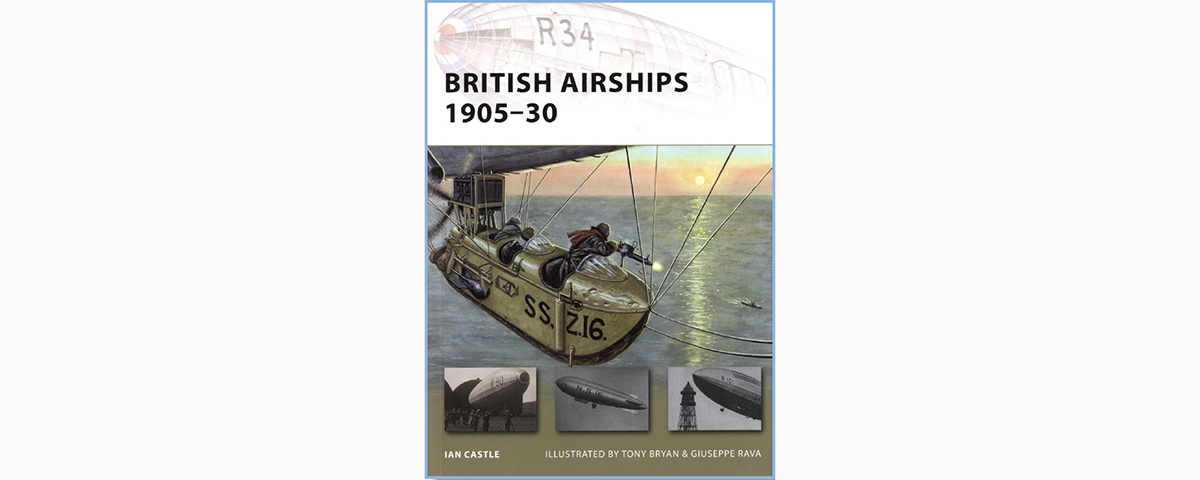British Airships 1905-30
by Ian Castle, Osprey Publishing, Oxford, England, 2009, $17.95.
By 1914 British airship technology was lagging far behind Germany’s, with no rigid airship program and few airships of any other description. But the British began producing a large number of smaller, less expensive nonrigid airships, soon to become known as “blimps.”
The Germans employed Ferdinand Graf von Zeppelin’s large and expensive rigid airships as strategic bombers. They enjoyed some initial success in that role by operating at high altitudes and under cover of darkness, but once airplanes began to be able to intercept them, the Zeppelins’ vulnerability became painfully obvious.
The British, in contrast, used their blimps over the sea, in the antisubmarine role. As a result their airships were less familiar to the public than the Zeppelins, which appeared over populated areas in Britain on a nightly basis. But it could be argued that, from an operational standpoint, the British blimps were every bit as successful, if not more so, than their German counterparts.
By the end of World War I, British blimps had evolved into highly effective antisubmarine weapons platforms. Although Britain’s airship program ceased in 1930, the U.S. Navy revived the use of antisub blimps on a large scale during World War II, with equally effective results.
Ian Castle provides a highly lucid explanation of the various types of dirigibles, covering not only the development and operational use of the nonrigid blimps during World War I, but also Britain’s far less successful program for the construction of giant rigid airships. It was the rigid airship program that finally spelled the end for British lighter-than-air development when the giant R 101 crashed on its first overseas voyage in 1930.
Castle’s book is a must for World War I enthusiasts, focusing on an aspect of that conflict rarely covered anywhere else. It should prove equally indispensable to anyone interested in lighter-than-air technology.
Originally published in the July 2010 issue of Aviation History. To subscribe, click here.





